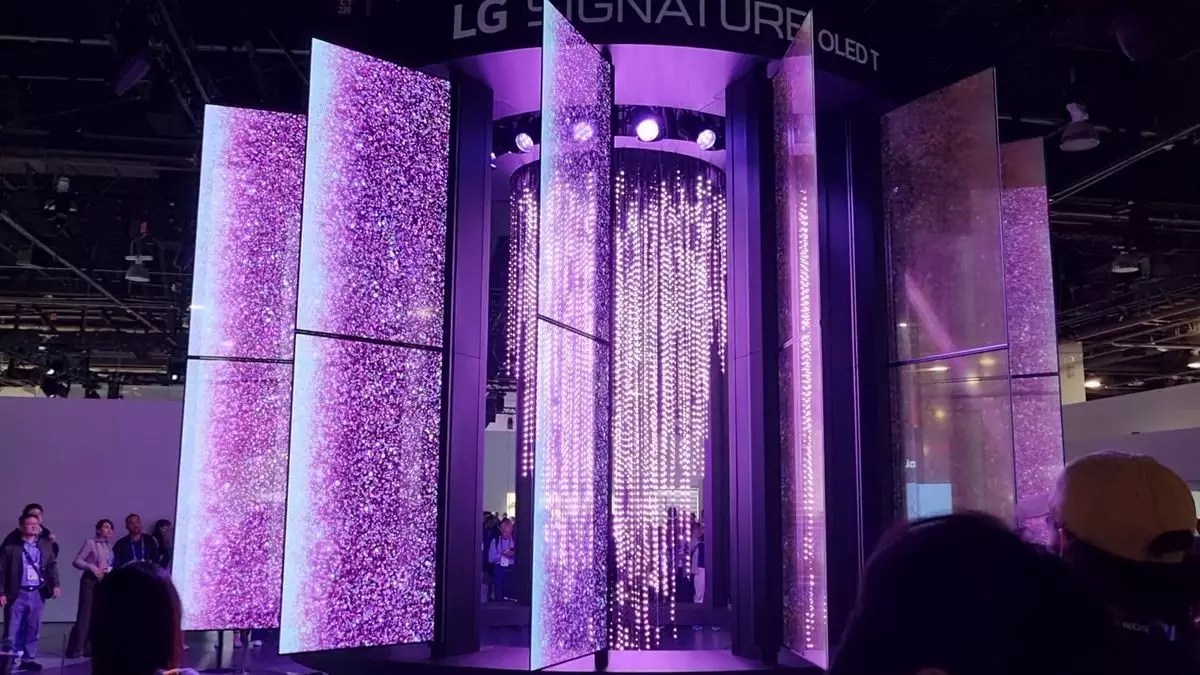It’s an undeniable truth that technology constantly pushes the boundaries of our imagination. Amidst this relentless advancement, certain innovations capture the public’s curiosity while also inviting skepticism. One such innovation is the transparent display, which, despite its flashy presentation, often raises concerns about its practical applicability and usefulness in everyday life. During a recent visit to CES 2025 in Las Vegas, I found myself ensnared by the spectacle of a transparent TV, igniting a blend of fascination and critical reflection on what these devices signify in the broader context of technology.
While I had previously asserted that transparent displays primarily serve as attention-grabbing gimmicks at trade shows, witnessing LG’s stunning showcase made me reconsider my stance—if only for a fleeting moment. The sheer artistry involved in assembling 77-inch LG Signature OLED displays, orchestrated to perform a visual ballet, was nothing short of mesmerizing. This wasn’t just the unveiling of a new product; it was a performance art piece that redefined expectations of visual technology.
However, this raises the pivotal question: do we need transparent displays in our homes? The answer is a resounding no, especially when considering their staggering price tag of approximately $60,000. The allure quickly dissipates upon reflecting on the reality that such technology is impractical for everyday use. In contrast to standard TVs, which offer versatility in content consumption, transparent displays primarily serve as a showcase piece rather than a functional household device. This disappointment is compounded when considering that for most individuals, traditional monitors serve all necessary purposes without the frills.
In a world increasingly saturated with technical marvels, it’s essential to distinguish between a product’s entertaining appearance and its functional value. Transparent displays may dazzle onlookers, appealing to our love for novel technologies often found in futuristic films, but their practical usage remains dubious. It is easy to be seduced by the glitzy exterior, but one must grapple with the realization that such screens seldom meet the demands of everyday life.
On a more practical note, my exploration of CES 2025 introduced me to the 163-inch Micro LED TCL X11H Max, a stark contrast to transparent TVs. With claims of nanosecond-level response times and an eye-popping 10,000 nits brightness, this display is tailor-made for the true tech enthusiast and gamer alike. The idea of immersing myself in high-speed racing games like Forza Horizon 5 on such a majestic screen is truly exhilarating.
The price for this higher-end experience also matches, hovering around $110,000. Yet, the difference lies in functionality—this display is built for performance, not just show. Unlike the transparent variant that feels more ornamental, the TCL X11H Max promises an engaging and dynamic user experience. For gamers and tech aficionados who desire a robust visual experience, it’s easy to see why this screen holds much more value than its transparent counterpart.
As one reflects on the various displays showcased at CES 2025, it’s apparent that the transparent screen will likely remain a niche product, appealing to those enchanted by its futuristic design rather than real-world practicality. Despite its aesthetic allure and potential for artistic expression, the fundamental lack of application for daily living speaks volumes about the technology’s limitations.
Ultimately, while I admit to being momentarily captivated by the allure of transparency, my commitment as a technology enthusiast compels me to advocate for devices that enhance functionality while still pushing the envelope in design. The transparent display, for all its charm, appears to epitomize the age-old adage—style over substance. In the rapidly evolving world of technology, it is crucial to differentiate genuine innovation from mere visual dazzle, ensuring that the experiences we embrace are not just captivating but also genuinely beneficial.


Leave a Reply